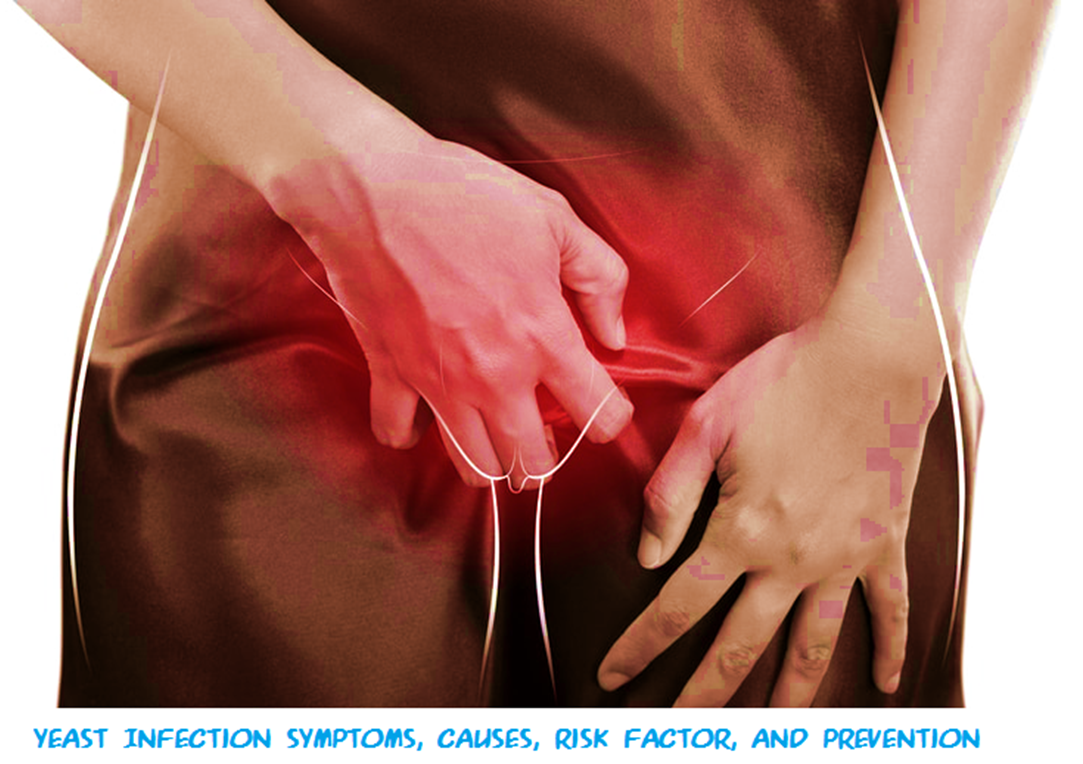Yeast Infection: Symptoms, Causes, Risk Factors, and Prevention
Yeast infection
• A vaginal yeast infection is a fungal infection that causes irritation, discharge, and intense itchiness of the vagina and the vulva the tissues at the vaginal opening.
• 70 to 75 percent of women will get a vaginal yeast infection at least once in their lives.
• 50 percent of these women will experience more than one infection.
• 5 to 8 percent of women experience recurrent or chronic yeast infections.
• Vaginal yeast infection is the second most common type of vaginal infection, after bacterial vaginal infection.
• Yeast lives naturally in the body and on the skin.
• Yeast infection is an infection resulting from the overgrowth of yeast.
• Yeast infection isn’t considered a sexually transmitted infection.
• There’s an increased risk of vaginal yeast infection at the time of first regular sexual activity.
• Some evidence that infections may be linked to mouth-to-genital contact (oral-genital sex).
• Most common are vaginal yeast infections, which cause itchiness and discomfort.
• Also called vaginal candidiasis, candidal vaginitis, or vulvovaginal candidiasis.
• Yeast infections are most commonly caused by Candida albicans.
• It is easily treated with antifungal medication.
Nongenital Yeast Infections
• The term “yeast infection” is most often used to refer to a vaginal infection. It also applies to other types of candidiasis.
• Oropharyngeal candidiasis: a yeast infection of the mouth and throat.
• Esophageal candidiasis, or Candida esophagitis: yeast infection affects the esophagus
• Cutaneous candidiasis: a yeast infection of the skin
• Invasive candidiasis: gets into the bloodstream, from using a contaminated intravenous catheter or as a complication of thrush, the yeast can cause a deadly infection
• Candidemia: an infection of the bloodstream itself.
Duration of Yeast Infection
• Most yeast infections clear up within a few days.
• But up to 8 percent of women develop recurrent or chronic yeast infections.
Signs and Symptoms of Yeast Infections
• Itching and irritation in the vagina and vulva
• Vaginal soreness
• Vaginal rash
• Burning sensation, during intercourse or when urinating
• Vaginal discharge that is clumpy
• Vaginal discharge that is watery
• Redness, swelling, and cracks in the skin outside the vagina (the vulva).
Causes of Yeast Infection
• Candida albicans is responsible for most vaginal yeast infections.
• Fungi of the genus Candida normally live on the skin and inside the body (mouth, throat, gut, and vagina) without causing health problems.
• 90 percent of vaginal yeast infections are caused by the species C. albicans.
• Most other cases are caused by C. glabrata.
• Less frequently, C. parapsilosis, C. tropicalis, and C. krusei cause vaginal yeast infections.
• Vagina naturally contains a balanced mix of yeast, including candida, and bacteria.
• Certain bacteria (lactobacillus) act to prevent an overgrowth of yeast.
• About 20 percent of women have candida in the vagina that doesn’t cause infection.
• There are many species of candida, at least 15 of which are known to cause infections if they multiply out of control.
Overgrowth of the yeast can result from:
• Antibiotic use, causes an imbalance in natural vaginal flora
• Pregnancy
• Uncontrolled diabetes
• An impaired immune system
• Taking oral contraceptives or hormone therapy
Risk Factor of Yeast Infection
• Antibiotic use: Broad-spectrum antibiotics, also kill healthy bacteria in your vagina, leading to overgrowth of yeast.
• Douches and vaginal sprays: can change the balance in your vagina.
• Increased estrogen levels: more common in women with higher estrogen levels, such as pregnant women or women taking high-dose estrogen birth control pills or estrogen hormone therapy.
• Uncontrolled diabetes: greater risk of yeast infections than women with well-controlled blood sugar.
• Impaired immune system: Women with lowered immunity, corticosteroid therapy, or HIV infection are at higher risk to get yeast infections.
• Sex: not considered a sexually transmitted infection, but it can be passed from person to person through sexual contact.
Prevention of Yeast Infection
• Practice good hygiene.
• Wear underwear that has a cotton crotch and doesn’t fit too tightly.
• Maintain proper diet, sleep, and exercise.
• Keep the area around the vagina clean and dry.
It might also help to avoid:
• Tight-fitting pantyhose
• Douching
• Scented feminine products, including bubble baths, pads, and tampons
• Hot tubs and very hot baths
• Unnecessary antibiotic use
• Staying in wet clothes, for long periods of time
Complications of Yeast Infection
• Pelvic inflammatory disease
• Infertility
• Ectopic pregnancy
• Pelvic abscess
• Spontaneous abortion
• Menstrual disorders
Diagnosis of Yeast Infection
• Treated with over-the-counter or prescription antifungal creams, ointments, tablets, suppositories, or oral medications.
• Bacterial vaginosis (vaginal infection caused by bacteria), trichomoniasis (a sexually transmitted infection), and dermatitis (irritated skin) can cause symptoms similar to yeast infections.
• 34 percent of women who purchased OTC antifungal medications accurately diagnosed themselves with a yeast infection.
• Women can have candida in their vagina without showing symptoms.
Home remedies for vaginal yeast infections
• Povidone-iodine topical solution, ointments, and vaginal suppositories
• Tea tree oil
• Probiotics
• Boric acid
• Vinegar
• Sodium bicarbonate
Yeast Infections and Sex
• Yeast infections are not considered sexually transmitted infections (STIs).
• Most yeast infections are not transmitted from person to person.
• They can occur in people who have never had sex.
Also, Visit: Pathophysiology Notes
